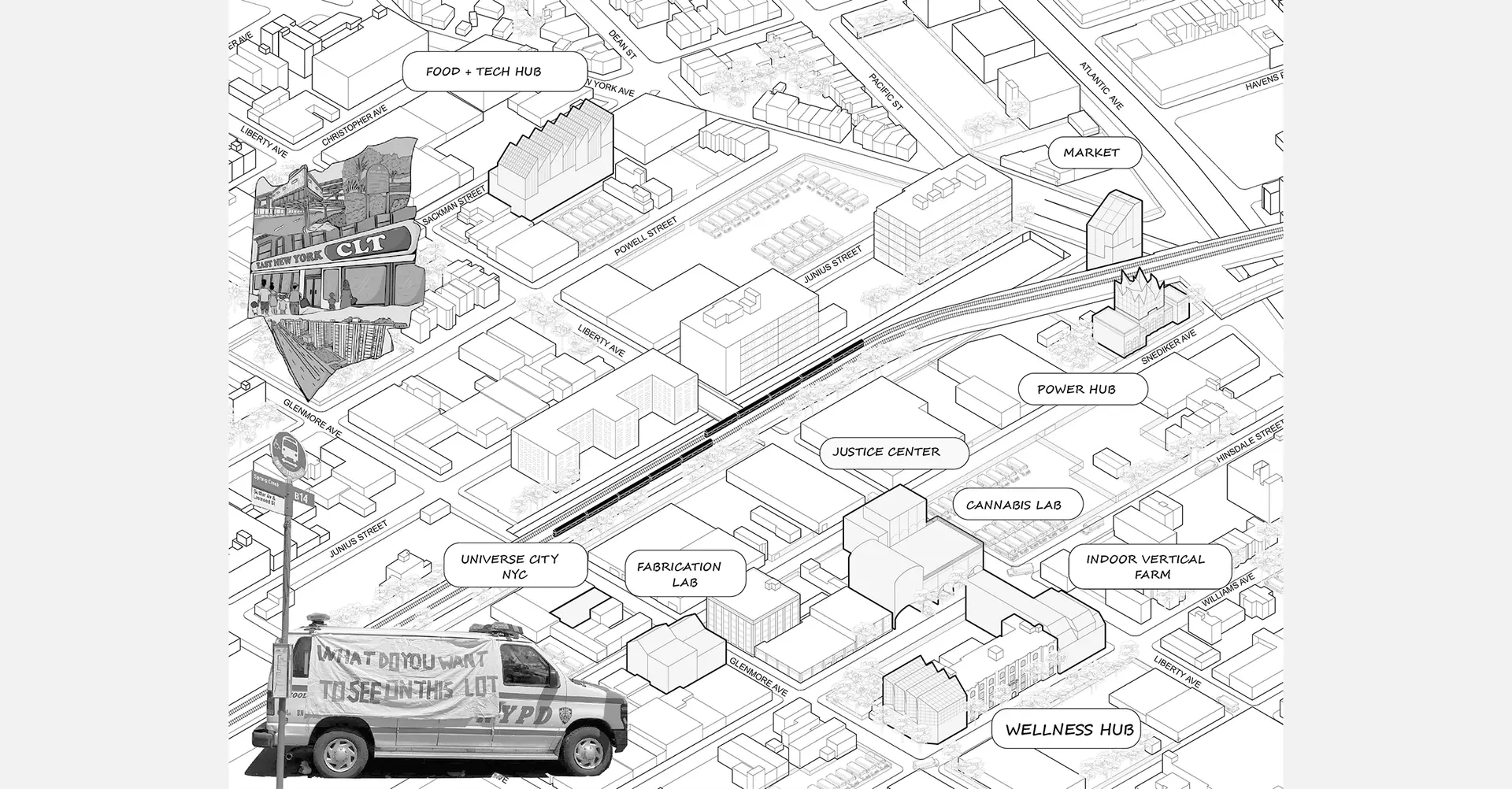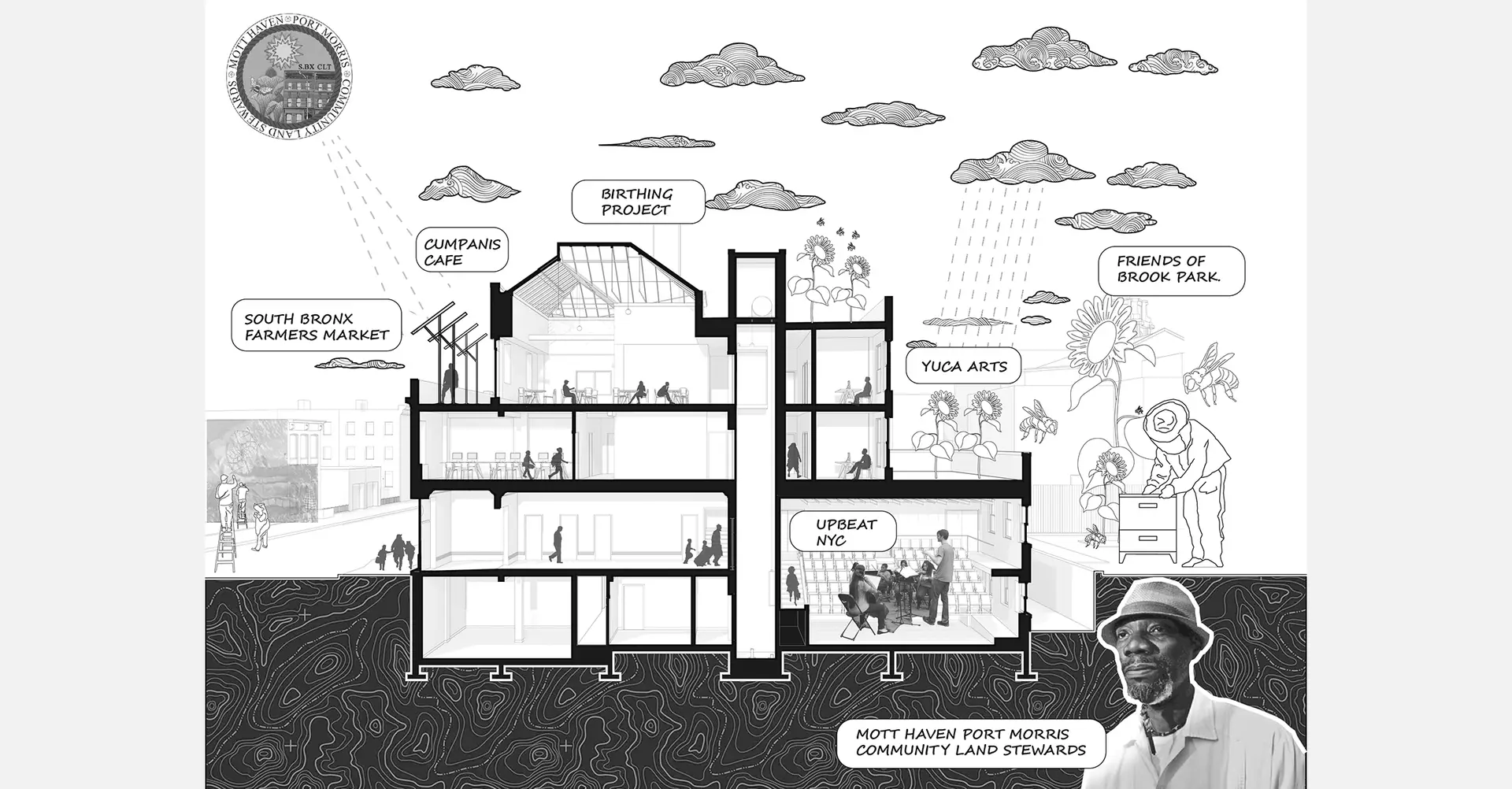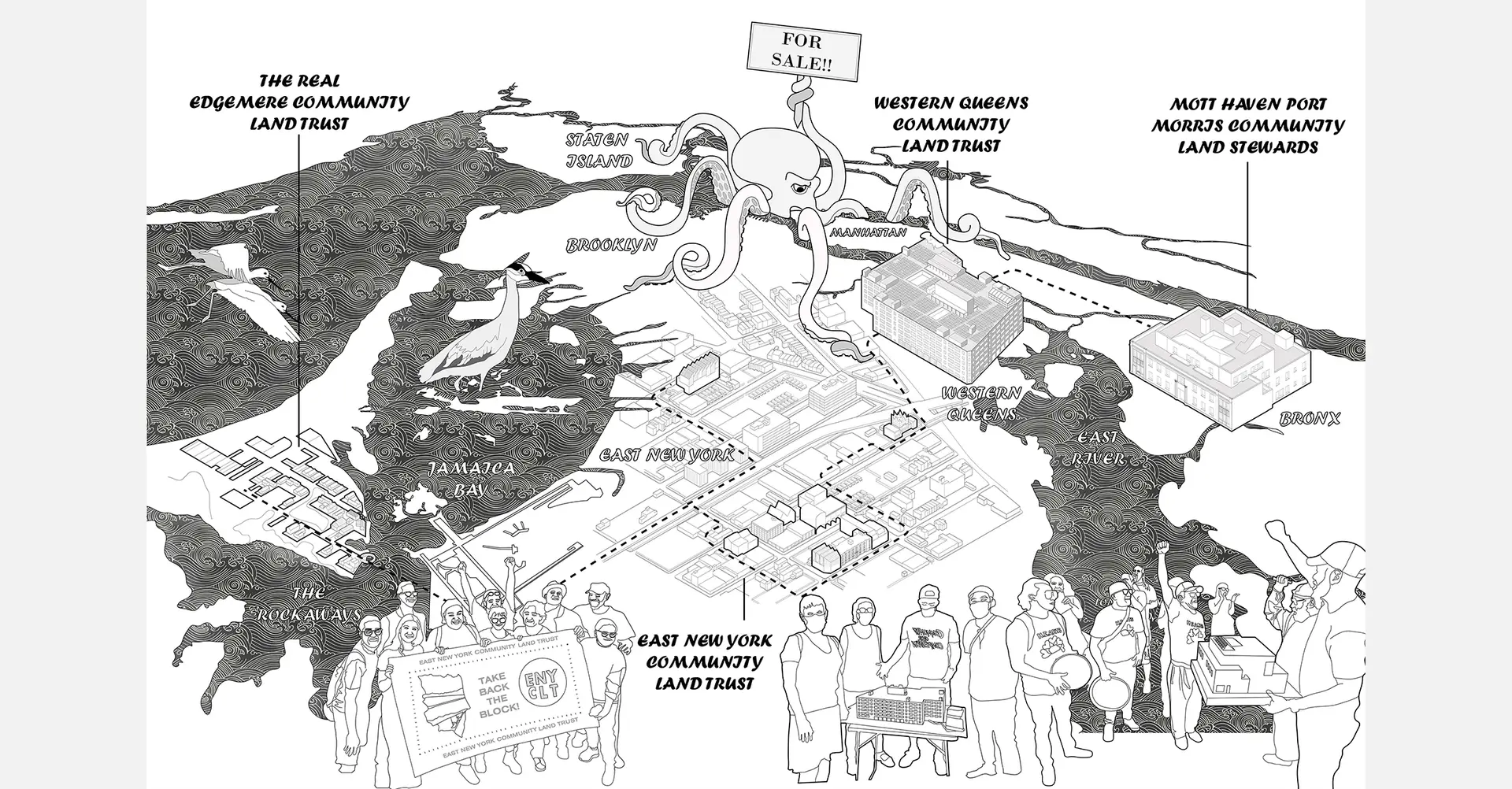
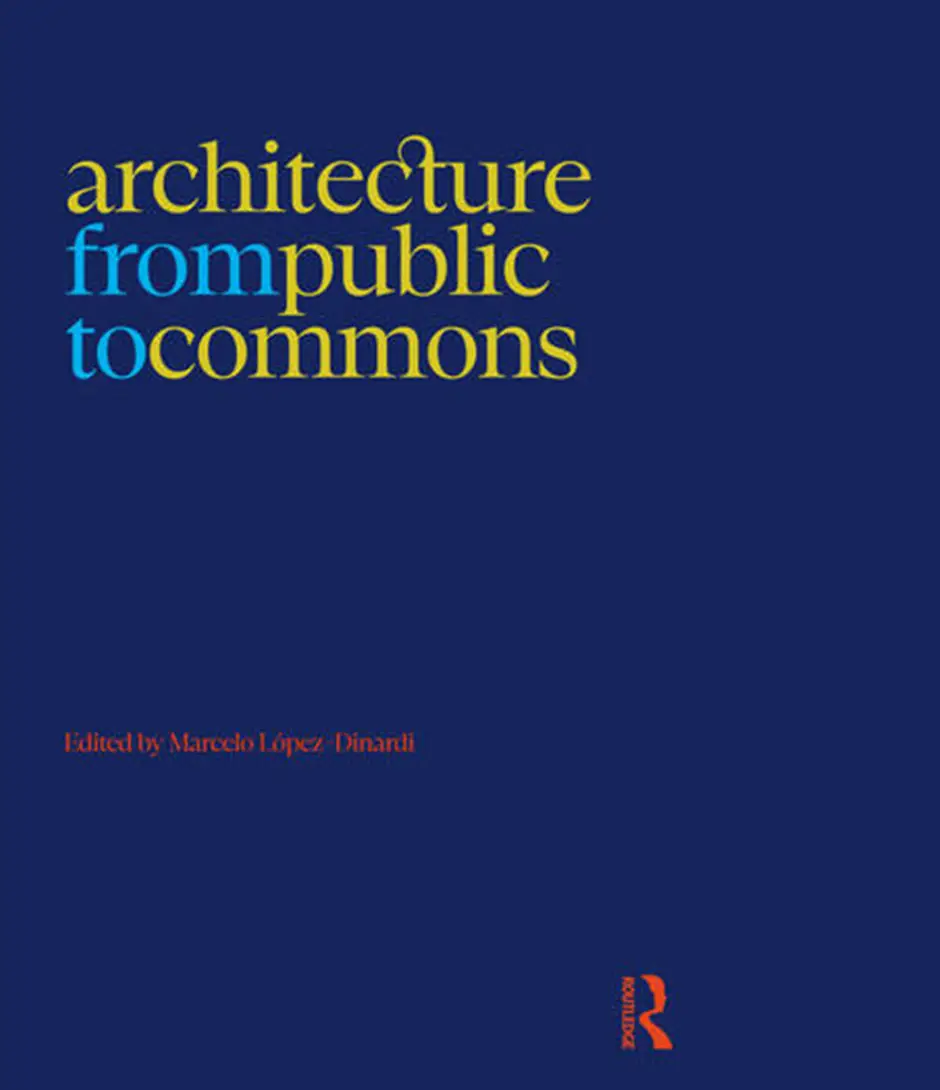
In Land We Trust
2024
“In Land We Trust” is part of a collection of essay titled “Architecture from Public to Commons” put together and edited by Marcelo Lopez Dinardi.
In her essay, Nandini Bagchee reflects on her practice and her work with several community land trusts across New York, exploring the complex and painful history of land. She ties this history to the destruction of native cultures and the exploitation of enslaved Black bodies. Bagchee grapples with this legacy as the foundation for resistance, highlighting how community land trusts serve as a powerful tool for justice, self-determination, and resilience amidst the growing pressures of development. Through this model, she underscores the ongoing fight for community rights and empowerment in the face of encroaching development interests.
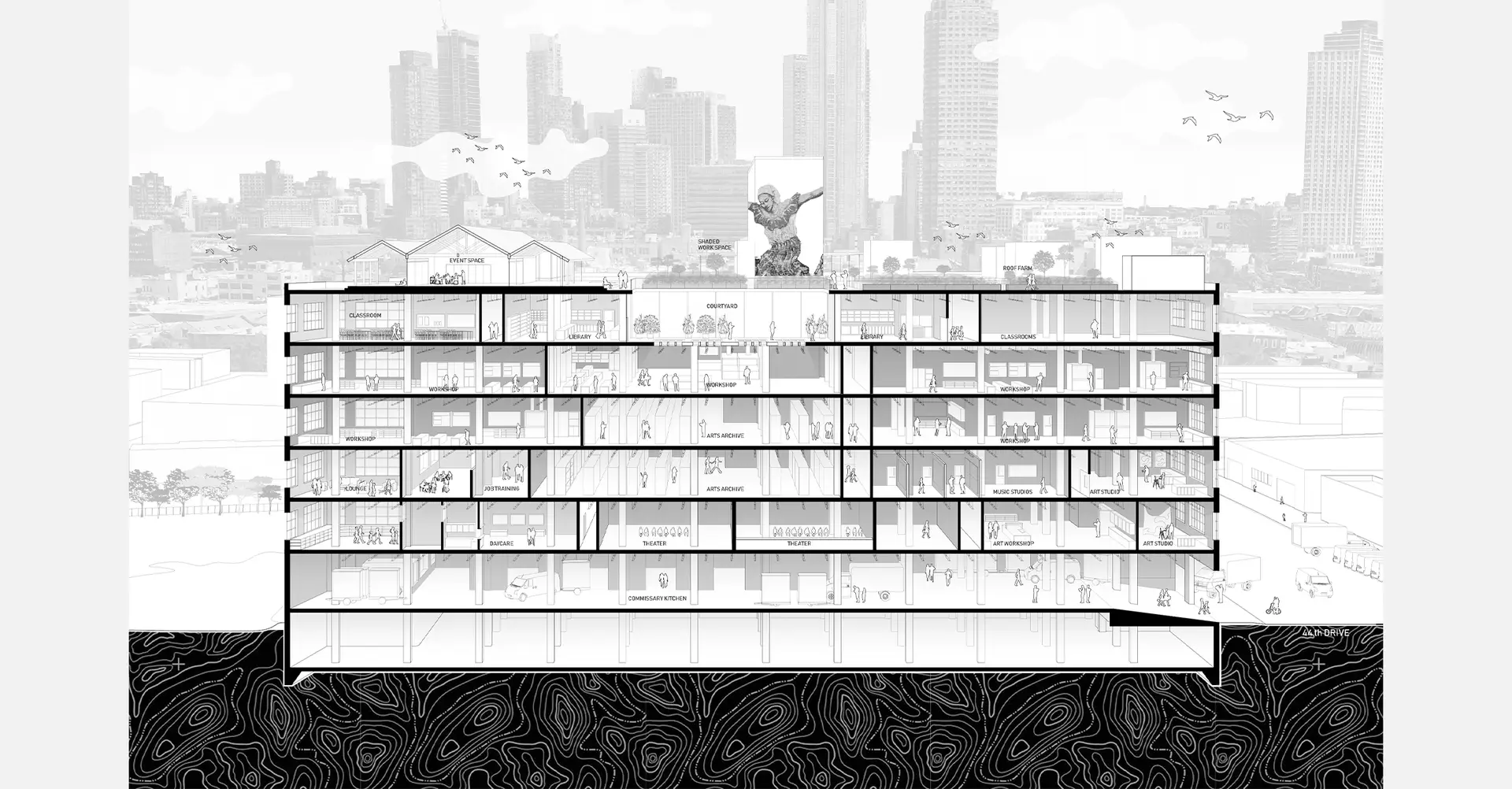
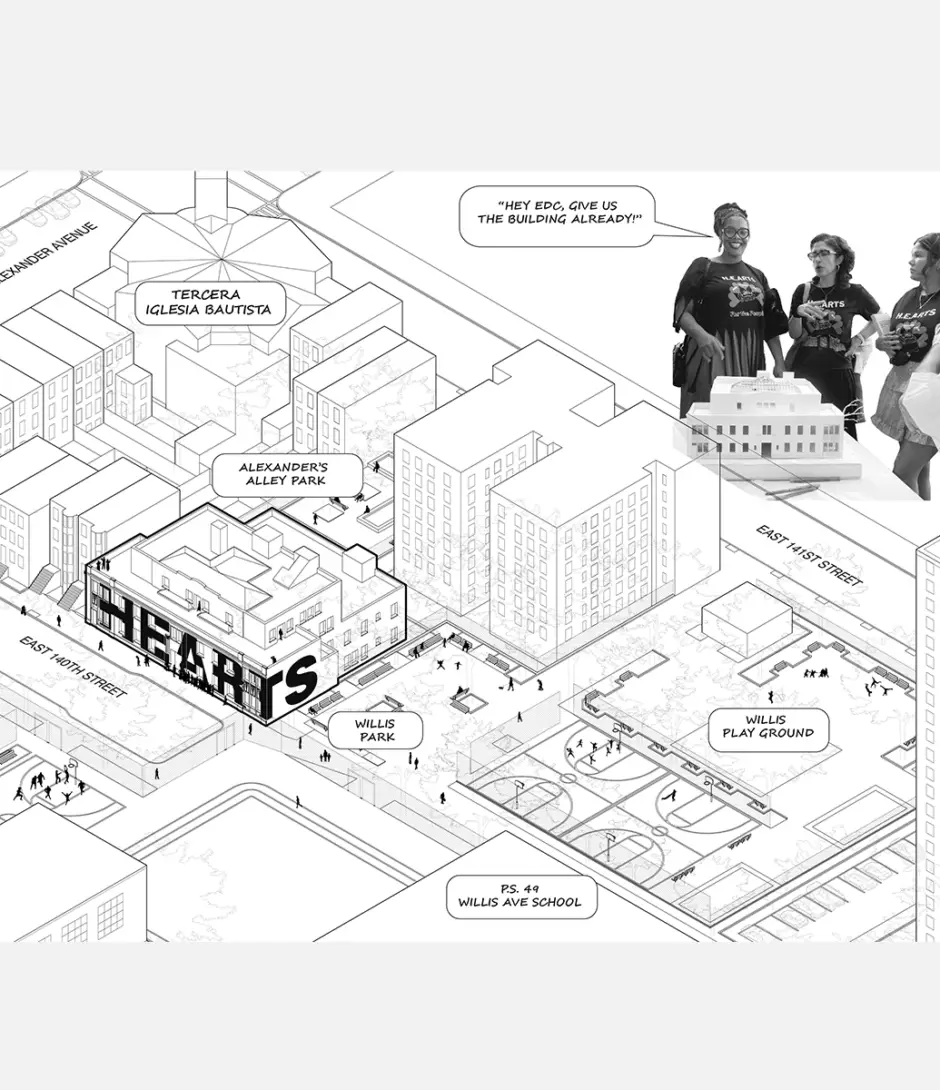
“The building has a deep meaning for those who saw the South Bronx destroyed and demolished in the 1980s. Foregrounding the history of the Young Lords and reclaiming this building has therefore become an act of communal healing for many who live in the neighborhood.”
